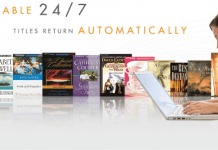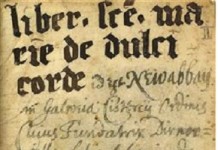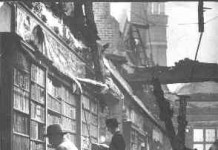
I have been an avid reader of Teleread for about two years now and have contributed pieces since last year. In this brief span of time, I have become a full fledged supporter of developing a well-stocked national digital library. In an earlier piece “Death, Senescence and E-books” I asked whether it wouldn’t be prudent to create free or low cost access to e-books and e-readers for long-term hospital patients. In that brief period of time my conviction was sealed and I now find myself in a position to take on a relatively small, but challenging role in advancing the concept of a digital library, from the purely abstract to the realm of the very real. This is occurring in a completely different setting than the one I addressed in that earlier piece: this setting is full of similar constraints but it’s also full of endless possibilities. I am alluding to the idea of creating a digital library for a New Jersey inner-city school, which is facing the same budgetary constraints that most of the state’s schools are facing. It has to walk a tight line between spending and results as it takes on the challenge of engaging urban learners.
In a book called “The Other Wes Moore” author Wesley Moore conveys the story of divergent paths that two inner-city young boys faced: one being the successful author, while the other Wes Moore being a convicted murderer. There were small choices and decisions that pushed both men in differing paths, with one of the most salient being the author’s development of a love for reading. He describes how he took on one book after another and in doing so discovered the person that he wanted to be; his polar opposite did not under-go this process. It was with this tale in mind and with the earlier conviction developed from noticing the decrepit libraries that hospices contain, that I took on the challenge of creating a digital library.
In an Old Testament biblical story -that many of you are perhaps familiar with- Huram of Tyre was given the privilege of helping build the Temple of Solomon. The Bible mentions how Huram spent countless hours carving pomegranates onto columns high above where human eyes would easily see them. When questioned as to why he would devote so much attention to such a minute detail, his reply was along the lines of his needing only to please GOD. I am agnostic personally, but have found the story absolutely brilliant in its simplicity and honesty. When I took this challenge on, I envisioned working quietly and with little fan fare, but immediately realized the complexity as well as the promises inherent in this project. I mentioned it’s –the project- existence on a small discussion thread connected to a related article and immediately received both warm praise and powerful advice which have both been infinitely useful. One request that arose was for me to write occasionally about my experiences, both the good and the bad, in order to motivate others, as well as to show that there are challenges which can be overcome. In this spirit, I have reluctantly agreed to share my experiences connected to working on this intimidating task.
I initially proposed the idea of creating a digital library to the charter school’s founder and she immediately saw the potential that the idea contained. I accomplished this by relaying to her, how doing so would increase the use of laptops in the classroom: these student laptops being a bulk purchase which the school was struggling to incorporate into lessons. But the real bait was conveying how within a year or two low cost e-readers would become ubiquitous enough to make a bulk purchase as economical a decision as buying textbooks for a given class. Their relative low cost and specialized nature would also allow students to actually take the readers home with them: something that they are not able to do with their assigned laptops. These expensive laptops are connected to an educational grant meaning that they would be difficult to replace as where e-readers may prove to be easy enough to maintain.
I then presented the idea at a staff workshop which went less smoothly than I hoped. During my presentation, I noticed a wide range of emotions. There were those who looked inspired, as well as those who looked incredulous, but for the most part people looked apathetic. I provided my contact information in order to have my fellow teachers forward materials to be added to this library: to date, weeks later, I have received one e-book. Everything in life has thought me that people are cautious and need to be carefully encouraged to join a movement of any sort. My colleagues are vibrant individuals who I feel are waiting to see whether anything comes of this project before they invest their valuable time. There is a poignant saying which applies here: “Success has a thousand fathers, but failure has none.”
I began this project by debating which content delivery method and format would be the most effective. There would be challenges, such as not being able to devote a considerable amount of time towards instructing colleagues, parents, and students as well as having to create a system that would capitalize on cloud computing. I also have to keep in mind that whatever I choose must be based on a format that has to insure universal conformity between users – a teacher being on page one out of a 100 without worrying whether or not her students are on the same page- but also is able to be supplanted or complimented by future formats. I will also be handicapped by my own limited computer skills as well as overriding concerns connected to Copyright laws and what constitutes Fair Use. My future choices, which I will share with you, may not have the power of those that the Moores made, but certainly bring to life the emotions that Huram must have felt when deciding how to go about constructing something which would eclipse anything that he had done up to that point in his life.

































